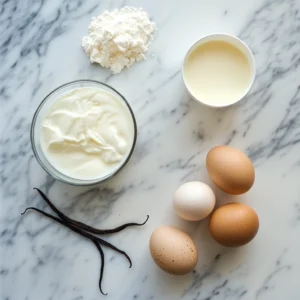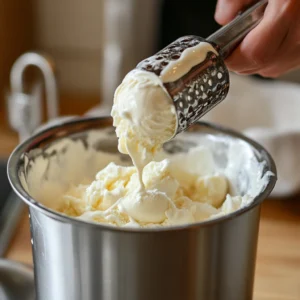Making your own homemade vanilla ice cream is an art that blends tradition, innovation, and a touch of science. For ice cream enthusiasts, crafting this classic dessert using an ice cream maker not only delivers a delightfully creamy treat but also gives you complete control over the quality and flavors of your ingredients.
In this comprehensive guide, we explore the rich history of vanilla ice cream, discuss the essential equipment and ingredients, detail a classic recipe with step-by-step instructions, and offer creative variations to suit any taste. Whether you are a seasoned pro or a curious beginner, this guide will empower you to create your own exceptional frozen dessert.
The History and Popularity of Vanilla Ice Cream
Vanilla ice cream has a long and fascinating history that spans centuries. Originally a delicacy reserved for royalty and the elite, the evolution of ice cream making has transformed it into a beloved treat enjoyed by millions around the world. With the advent of modern ice cream makers, the once-luxurious dessert is now accessible to anyone with a passion for culinary creativity.
The early methods of making frozen treats involved using ice mixed with salt to lower the temperature of the mixture, a technique that laid the groundwork for what we now recognize as ice cream. Over time, innovations in freezing technology and the development of specialized equipment allowed home cooks and professional chefs alike to experiment and perfect the craft. This evolution not only enriched the flavor and texture of the dessert but also democratized its preparation.
Understanding the evolution of this dessert enriches your appreciation of every spoonful you enjoy. For a deeper dive into the scientific principles behind this transformation, you might find it valuable to read The Science of Ice Cream, which explains how ingredients interact during the freezing process and why your ice cream turns out so smooth and creamy.
Essential Equipment and Quality Ingredients

The foundation of great homemade vanilla ice cream lies in the quality of your equipment and ingredients. Selecting the right ice cream maker is paramount. There are several types available on the market. Electric machines automate the process and are known for delivering a consistent texture every time, while manual machines allow for more hands-on control. Some models come with a built-in compressor, which eliminates the need to pre-freeze the bowl, ideal for frequent ice cream making.
Ingredient List
For a classic vanilla ice cream recipe, you will need:
- 2 cups whole milk – provides a smooth and balanced base
- 2 cups heavy cream – adds richness and creaminess
- ¾ cup granulated sugar – sweetens the mixture and aids in texture
- 1 tablespoon vanilla extract or the seeds from 1 vanilla bean – for authentic vanilla flavor
- (Optional for custard-style) 4 egg yolks – for a richer, creamier texture
Ensuring that all your ingredients are of high quality will make a significant difference in the final flavor and texture of your ice cream.
Before beginning the mixing process, it is essential to ensure that all your ingredients are at the right temperature, typically, room temperature works best. This step allows for a more even distribution of sugar and flavor throughout the mixture. In addition, having well-maintained kitchen tools, such as a sharp knife for splitting vanilla beans, can make a significant difference in your preparation process. For tips on maintaining your culinary tools, visit How to Sharpen a Knife: A Comprehensive Guide.
The Science Behind Ice Cream Making
The secret to truly remarkable homemade vanilla ice cream lies not only in the ingredients but also in understanding the science behind its creation. The process of churning is critical; as the mixture freezes, the constant motion of the ice cream maker incorporates air, which results in a light and airy texture. This process, known as overrun, helps to prevent the formation of large ice crystals, ensuring that your ice cream remains smooth and velvety.
Sugar plays a dual role during this process. It not only adds sweetness but also lowers the freezing point of the liquid. This phenomenon, known as freezing point depression, ensures that even at low temperatures, the ice cream does not become rock solid. Instead, it stays soft and scoopable, a quality highly prized in a perfect ice cream.
Balancing the ratio of heavy cream to whole milk is another crucial factor. The cream contributes the necessary fat, which enriches the flavor and creates a velvety texture, while the milk helps maintain the right consistency. By carefully controlling these proportions and the churning process, you can achieve a dessert that is both luxuriously creamy and refreshingly light.
The Classic Homemade Vanilla Ice Cream Recipe
Now that we have discussed the background, equipment, and science, let’s delve into a traditional recipe for homemade vanilla ice cream. This classic recipe is designed to produce a dessert that is as rich in flavor as it is smooth in texture.
- Prepare the Base:
In a large, heavy-bottomed saucepan, combine the whole milk, heavy cream, and granulated sugar.- Stir continuously over medium heat until the sugar dissolves completely.
- Important: Avoid bringing the mixture to a boil.
- Infuse with Vanilla:
- Once the sugar is dissolved, add your vanilla extract or the seeds from a vanilla bean.
- Allow the mixture to heat gently for a few minutes to let the flavor infuse.
- (Optional for Custard Style) Incorporate Egg Yolks:
- If you desire a richer, custard-like texture, beat the 4 egg yolks in a separate bowl.
- Temper the yolks by slowly adding a small amount of the warm mixture into them while whisking continuously.
- Gradually add the yolk mixture back into the saucepan, stirring constantly.
- Cool the Mixture:
- Remove the saucepan from heat and let the mixture cool to room temperature.
- This step is critical for ensuring an even freeze in your ice cream maker.
- Churn the Ice Cream:
- Transfer the cooled mixture into your prepped ice cream maker (ensure the bowl is adequately pre-frozen if required).
- Churn for 20 to 30 minutes until the mixture reaches a soft-serve consistency.
- Freeze for Firmness:
- Transfer the churned ice cream into an airtight container.
- Place it in the freezer for an additional 2 to 3 hours to firm up before serving.
Creative Variations to Personalize Your Ice Cream

One of the most exciting aspects of making your own homemade vanilla ice cream is the opportunity to experiment and create variations that reflect your personal taste. The classic recipe serves as an ideal base for experimentation. You might consider incorporating ingredients such as fruit purees, chocolate chips, or even swirls of caramel. Each addition can transform your ice cream into a unique creation, tailored to your liking.
For those who prefer to experiment with textures, consider mixing in pieces of cake, cookie crumbles, or toasted nuts during the last few minutes of churning. Alternatively, a splash of your favorite liqueur can add a sophisticated twist to the flavor profile. With vanilla as a neutral canvas, the possibilities for customization are endless.
Adapting the recipe to meet dietary needs is another popular approach. If you are seeking a lighter option, substitute full-fat dairy with lower-fat alternatives, or try using almond or coconut milk for a dairy-free version. Similarly, if you wish to reduce the sugar content, natural substitutes like stevia or erythritol can be used without compromising the creamy texture of your ice cream.
Tips for Optimizing Your Technique and Equipment

The quality of your homemade vanilla ice cream is closely tied to both your technique and the performance of your ice cream maker. First, ensure that all your ingredients are as fresh as possible. Using high-quality cream, milk, and vanilla can significantly impact the final flavor and texture of your ice cream. Always check the expiration dates and store your ingredients properly before use.
Temperature control is another critical aspect. Allowing the mixture to cool completely before churning is essential for a smooth final product. A mixture that is too warm can lead to uneven freezing and the formation of large ice crystals, which will compromise the creaminess of your dessert.
Maintaining your equipment is equally important. Regular cleaning and proper storage of your ice cream maker will not only prolong its life but also ensure that each batch of ice cream turns out as expected. Following the manufacturer’s maintenance guidelines can help prevent issues such as uneven churning or mechanical malfunctions.
In addition to these basic tips, consider integrating additional tools into your process. For instance, a reliable kitchen thermometer can help you monitor the temperature of your mixture, ensuring that it remains in the optimal range throughout the preparation. These small details, when combined, contribute significantly to the overall success of your recipe.
The Science Behind Perfect Texture
Understanding the scientific principles that govern the texture of ice cream can help you troubleshoot common issues and perfect your recipe. The process of churning not only incorporates air into the mixture but also controls the size of the ice crystals that form during freezing. A faster churn generally results in smaller crystals and a smoother texture, while a slower process might yield a denser, more granular product.
The balance of sugar and fat is equally crucial. Sugar lowers the freezing point of the liquid, keeping the ice cream soft even when stored in the freezer. The fat in the cream, on the other hand, coats the ice crystals and contributes to the overall smoothness of the dessert. Striking the right balance between these components is essential for achieving that signature velvety consistency that defines high-quality homemade vanilla ice cream.
Presentation and Enjoyment
A well-crafted dessert deserves an equally thoughtful presentation. Serving your homemade vanilla ice cream in an appealing manner can elevate the entire dining experience. Consider using elegant glassware or decorative bowls to showcase your creation. A drizzle of caramel, a scattering of fresh berries, or even a sprinkle of finely chopped nuts can transform a simple dessert into an enticing treat.
Allowing your ice cream to sit at room temperature for a few minutes before serving will help achieve the perfect consistency for scooping. This small step makes a big difference, as overly hard ice cream can detract from the flavor and overall enjoyment of the dessert.
Embracing Creativity in the Kitchen
The beauty of homemade vanilla ice cream lies in its versatility. Once you master the classic recipe, you are free to explore countless variations and adaptations. The kitchen becomes your creative playground, where you can mix and match flavors, textures, and even techniques to produce a dessert that is uniquely your own.
Experiment with infusing your base mixture with spices such as cinnamon or nutmeg, or add a splash of fruit puree for a refreshing twist. The key is to experiment in small batches until you find the perfect balance of flavors. Over time, you will develop a signature style that reflects your personal culinary vision.
Final Thoughts
Crafting your own homemade vanilla ice cream with an ice cream maker is more than just a recipe, it’s a journey through tradition, science, and creative exploration. By understanding the history, mastering the techniques, and experimenting with variations, you can transform simple ingredients into a dessert that is both satisfying and memorable.
The process may require patience and practice, but every step, from carefully measuring your ingredients to monitoring the churning process, contributes to the final result. The effort is richly rewarded with a treat that not only delights the palate but also stands as a testament to your culinary skills.
For those interested in further exploring the scientific intricacies of ice cream making, revisiting The Science of Ice Cream can provide additional insights that will enhance your future experiments. Embrace the blend of tradition and innovation, and let your passion for creating delightful frozen desserts guide you on this flavorful journey.
Happy ice cream making, and may every scoop bring you a taste of perfection!
Bon appétit !

